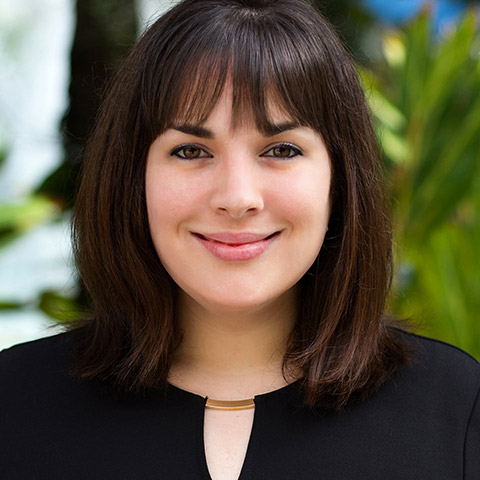Pre-term Prep
“We teach to change the world,” says Stephen Brookfield. “The hope that undergirds our efforts to help students learn is that doing this will help them act toward each other, and toward their environment, with compassion, understanding, and fairness.” The brief calm before the start of the term is a perfect time to reflect on how you can build the sort of powerful learning experiences we really want for our students.
What are your goals?
What do you really want your students to know or to be able to do when they’ve successfully completed your course? What should they gain from the experience? How will they be changed? For most of us, a list of content isn’t enough. We also want our students to gain a set of perspectives, priorities, or even shifted values.
When we allow a reading list or textbook to shape our course design, we tend to pack in too much, so we don’t leave room for students to grow as critical thinkers. Learning requires reflection, practice, and feedback–and (paradoxically) an abundance of content gets in the way (Nelson, 1999). The impact of your course will be far greater when you begin with meaningful goals for student learning.
After you’ve fine-tuned your goals, you can take a closer look at the alignment among the goals, the ways you attempt to measure students’ progress, and the “#AFAEC2” the way. In other words, your tests, papers, and projects should help you (and students) gauge their attainment of course goals. If they don’t, you may need to adjust either the goals or the ways you assess students’ progress toward them.
Fink (2003) reminds us that gathering evidence of student learning “will usually involve”#9CE13C” some paper/pencil tests, but we will probably need to include other activities as well,” and he adds that “when we become clear about what constitutes successful student performance, it is much easier to develop effective teaching/learning activities.”
These activities should provide adequate opportunities for students to get practice and feedback. As Terry Doyle (2011) reminds us, “the one who does the work does the learning.” The more students have to do—the more they have to think through, puzzle out, solve, inquire, explore—the more they’ll learn, and the better they’ll remember it. This means that if we want our students to learn more, we have to resist the temptation to tell. We need to deploy our expertise differently, designing experiences that lead to learning. When we let students do the work, we guide them through the thinking processes we want them to practice, but they have to do the thinking for themselves.
This will probably involve lots of talking, writing, and collaborating, as students explore new concepts. Informal, low-stakes opportunities for you and your students to find out whether (and how much) they’re “getting it” are sometimes called Classroom Assessment Techniques (another kind of CATs) and are also great ways to use class time. You might want to use think-pair-share, or Conceptests, followed by small group discussion. (Great tips on group work, including how to form the groups and design effective assignments, are available here.) Clickers and games like Kahoot can help you create a loop of immediate feedback, letting you and your students gauge their progress and identify trouble spots, so that you can both get back on track.
What can a syllabus do?
We often adjust our syllabi to try to prevent certain student behaviors, protect ourselves from grievances, or appease a regulating body’s demands for learning objectives that echo accrediting standards, etc. Under the weight of all those policies, we can lose sight of student learning, and that’s a wasted opportunity: the real audience of a syllabus should be the students. The syllabus is their first point of contact with your course, and if you craft it carefully, it can be both a learning guide and an inspiration.
As you make the final tweaks to your syllabus, two areas deserve special attention: your grading criteria and your tone.
Your grading scheme implicitly tells students which features of the course are most important and how you expect them to allocate their time (Cox, 2009). Which course activities will lead to the most learning—annotating the reading, writing, solving problems, working collaboratively, reflecting on connections amongst concepts? By assigning points to the work students need to do in order to learn effectively, you instruct them how to use their time. If all of the weight rests on a couple of exams or major projects, students will be very likely to cram for these high-stakes tests, rather than keeping up with daily work.
The tone of your syllabus can also have a significant impact on students’ motivation. Ken Bain, in What the Best College Teachers Do (2004), describes a “promising syllabus” as one that makes a promise to students about what they can expect to gain as a result of the class; describes the course activities designed to fulfill this promise; and “begins a conversation about how the teacher and the student would best come to understand the nature and progress of the student’s learning.”
A learning-centered syllabus includes learning goals that students can understand and value; descriptions of all major assessments and their relation to the learning goals; and a sense of how the class will be conducted to support their learning–all phrased in a positive, respectful, and inviting way. You can use this checklist to make sure your document sets the tone for a productive, learning-filled semester.
If you’d like feedback on your syllabus, please consider attending one of our Syllabus Clinics next week: Thursday August 23, from 10:00-12:00, or Friday, August 24, from 2:00-4:00, in 432 DIF. You can drop by any time during the clinic. We can help you determine what your syllabus says about you and your course; fine tune your learning objectives, grading scheme, or assignments; or review any other part of your syllabus.
We look forward to working with you. Welcome Back!
Click here to sign up for fall faculty reading groups.
CAT has grown over the summer. Please welcome our two new colleagues:
 Jennifer Bartman, Associate Director
Jennifer Bartman, Associate DirectorJen joins us from Florida International University, where she taught in the Department of English, served as a faculty consultant and then associate director of the Writing Across the Curriculum program, and served as a faculty fellow and then associate director of the Center for the Advancement of Teaching.
 Fabrizio Fornara, Assistant Director
Fabrizio Fornara, Assistant DirectorFabrizio has a Ph.D. in Instructional Systems and Learning Technologies, and more than ten years of teaching experience at the college level. His research focuses on the development of students’ intercultural competence, social media for teaching and learning, and the intersection between critical pedagogy and educational technology.



